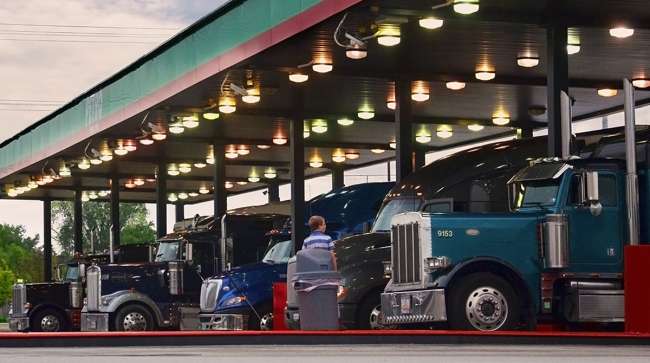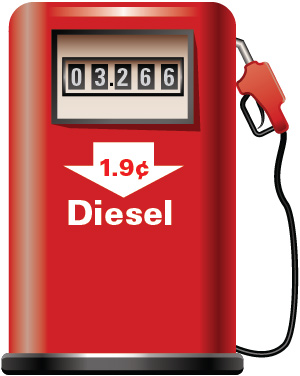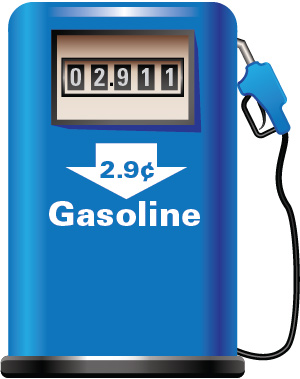Diesel Slips 1.9¢ to $3.266 a Gallon

The U.S. average retail price of diesel fuel fell 1.9 cents to $3.266 a gallon, following a .3 cent decline a week ago, according to the weekly report from the U.S. Department of Energy’s Energy Information Administration.
Diesel now costs 74.2 cents more per gallon than it did a year ago, the agency reported June 11.
The average price of diesel also fell in all regions nationwide. It dropped 1.3 cents a gallon to $3.990 in California, but that state remains the most expensive place in the country to buy the fuel. Diesel in California has gone up $1.084 in the last year.

The West Coast is the second most expensive region at $3.769 a gallon, down 1.5 cents in the last week but up 96.4 cents for the year. The Gulf Coast had the lowest price at $3.037 a gallon, down 1.8 cents a gallon for the week but up 66.9 cents in the past year, EIA reported.
Less-than-truckload carrier Saia hasn’t been severely impacted by the rise in diesel because it takes a proactive, broader approach to handling fuel costs, said Cris Burgum, vice president of maintenance and real estate at the Johns Creek, Ga.-based firm.
“We buy fuel in bulk through a competitive process from our suppliers” and make it available to our drivers at a network of diesel tank sites, Burgum said.
In addition, Saia looks for engines with strong miles-per-gallon numbers when it purchases new trucks, Burgum said. Company tractors are monitored monthly to make sure they meet fuel economy standards and are brought in for maintenance if there’s a problem.
And Saia works with its drivers on techniques to cut fuel use such as reducing idling and top speed, Burgum said.
“Those are all things we do all the time whether the price of diesel is going up or down,” Burgum said.

Saia ranks No. 28 on the Transport Topics list of Top 100 for-hire carriers in North America.
Despite the year-long rise, the cost of diesel isn’t convincing carriers to make a major investment in alternative-fuel Class 8 trucks.
Diesel hovered around $4 a gallon from the summer of 2012 to summer 2014 and there was momentum by fleets to invest in natural gas-powered trucks, said Don Ake, FTR’s vice president of commercial vehicles. But that move faded as the price of diesel dropped.
Still, “$4 a gallon for diesel is probably a good line point where people start considering” alt-fuel vehicles, Ake said. “Today it’s electric which has lower emissions than natural gas. So you would have environmental and economic reasons for considering it.”
“But moving a fleet to another fuel is not done quickly. It’s a long-term commitment that takes years to achieve,” he said.
Burgum said that he is mindful of developments like truck platooning and electric trucks, but diesel prices today aren’t driving him to buy alt-fuel trucks.
The price of near-term West Texas Intermediate crude oil futures settled June 11 at $66.10 a barrel on the Nymex, up 36 cents for the day. The previous week, June 4, crude oil futures settled at $64.75 a barrel.
The U.S. average price of a gallon of regular gasoline at the pump dropped 2.9 cents to $2.911 — a rise of 54.5 cents from a year ago, EIA reported. Gasoline prices also fell in all regions of the country.
The most expensive gasoline was on the West Coast, including California. The price was $3.452 a gallon, down .8 cents a gallon last week but up 56 cents in the last year. The cheapest gas is on the Gulf Coast, selling for $2.696 a gallon, down 2.9 cents.
Energy analysts note that fuel prices could rise again due to demand driven by a strong economy, unexpected weather events and various geopolitical pressures.
Then again, prices might decline.
Bloomberg reported June 11 that Russia and Saudi Arabia will propose an increase in oil production at the meeting of the Organization of Petroleum Exporting Countries in Vienna June 22-23. Russia is not an OPEC member but it agreed to an OPEC-led production cut that began in 2017.

